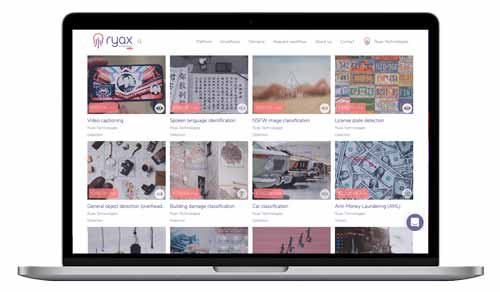Smart City, a new way of understanding urban development, aims to improve the quality of life of a city's citizens by focusing on new technologies. If the idea sounds good, setting up such a dizzying project can be problematic. Learn about the key issues of a Smart City and the different approaches to this project.

What is a Smart City?
To carry out a Smart City project, it is important to properly assimilate the basics at the heart of creating a smart city.
According to the CNIL (National Commission for Information Technology and Freedoms in France), smart city is a relatively new concept in urban development, which improves the quality of life of each person by making the city more adapted to the way of life of city dwellers.
The most advanced technologies are used by considering an ecosystem of interconnected services and objects. This new type of management covers virtually all infrastructure, such as:
- Networks: gas, water, electricity and telecommunications;
- Public infrastructure: home automation, buildings, street furniture;
- Transportation: roads, public transport, smart cars, carpooling and so-called soft mobility (by bike, on foot);
- E-services and e-administrations, etc.
In other words, the Smart City aims to improve the lives of citizens through new technologies, focusing on six key aspects: the economy, living knowledge, the environment, administration, mobility, and quality of life. The way smart City is approached may be different for each project carrier.
The concept of Smart City, which is growing more and more today, tackles many points neglected for many years by classical urban development. From different networks to the management of ecology and different citizens, data plays a crucial role in the evolution of the methods put in place in these smart cities.
The fundamentals
As mentioned above, each project can grasp the concepts of the smart city in a singular way, however, there are 3 fundamentals common to each project.
- To have a clear and real administration: to this end, we must be able to associate with each intercommunal structure, a structure that governs with elected officials and an administration, and thus allow the commune to be steered towards a cross-cutting policy;
- Avoid the privatization of the city: it is necessary to be able to ensure that the territories maintain complete control of data, tools or smartphone applications, so as not to fall into certain problems of conflict of interest;
- Ensuring the inclusion of the city: any type of social or digital divide must be limited to ensure an inclusive city, with no exclusions of some city dwellers.

The criteria for belonging
One of the big questions would be, how do you know if a city is part of the Smart Cities? The criteria for belonging to this category are still unclear and depend heavily on the organization doing the study and choosing the criteria.
According to the Regional Science Centre of the Vienna University of Technology in Austria, the criteria for belonging to the Smart City class are 6, and all are subdivided into quantifiable categories:
Smart Economy :
- Innovative spirit;
- Entrepreneurial spirit;
- Image of the city;
- Productivity;
- The labour market;
- International integration.
Smart people :
- Education ;
- Long-term learning;
- Ethnic plurality;
- Open-mindedness.
Smart environment:
- Air quality;
- Ecological awareness;
- Sustainable resource management.
Smart Governance:
- Political consciousness;
- Public and social services;
- Efficient and transparent administration.
Smart mobility
- Local transport system;
- National (inter-) accessibility;
- Information and communications technology infrastructure;
- Sustainability of the transport system.
Smart living :
- Cultural and leisure centres;
- Health conditions;
- Individual security;
- Housing quality;
- Educational facilities;
- Tourist attraction;
- Social cohesion.
Examples of Smart City
To get a better understanding of the subject, here are some examples of Smart City already existing. Among the 25 smart cities identified in France, here are 2 examples of cities that are leading the example in France in this area, alongside Nantes, Dijon and Montpellier: Lyon and Bordeaux.
Lyon and its 340 million euros invested in smart city projects
Lyon is THE pioneer city in the field in France. It offers electric vehicles in car-sharing, it is testing autonomous shuttles for public transport of users, but primarily, it has inaugurated in 2015 the intelligent eco-neighbourhood of the Confluence, where stands a set of 3 buildings called Hiraki which have the distinction of producing more energy than they consume.
Bordeaux and its eco-neighbourhood test of the Matmut-Atlantique stadium
The city of Bordeaux carries out numerous tests of Smart City in the Matmut-Atlantique stadium district to deploy these methods throughout the metropolis in the future. One of the main challenges of these tests is to reduce the energy consumption of the neighbourhood by positioning some 220 data sensors on public lighting and on the electric vehicle charging system.
The main objective is to be able to remotely control the public lighting system, but also to have more data on how citizens use electric vehicles to improve their deployment.
As you can see in these examples, smart city development is done step-by-step and test-based, to maximize its management and deployment.
It is for this type of project that the Ryax community offers a wide range of ready-to-use data analysis. Understand how:
Smart City's approach
To get a better understanding of the subject, here are some examples of Smart City already existing. Among the 25 smart cities identified in France, here are 2 examples of cities that are leading the example in France in this area, alongside Nantes, Dijon and Montpellier: Lyon and Bordeaux.
Lyon and its 340 million euros invested in smart city projects
Lyon is THE pioneer city in the field in France. It offers electric vehicles in car-sharing, it is testing autonomous shuttles for public transport of users, but primarily, it has inaugurated in 2015 the intelligent eco-neighbourhood of the Confluence, where stands a set of 3 buildings called Hiraki which have the distinction of producing more energy than they consume.
Bordeaux and its eco-neighbourhood test of the Matmut-Atlantique stadium
The city of Bordeaux carries out numerous tests of Smart City in the Matmut-Atlantique stadium district to deploy these methods throughout the metropolis in the future. One of the main challenges of these tests is to reduce the energy consumption of the neighbourhood by positioning some 220 data sensors on public lighting and on the electric vehicle charging system.
The main objective is to be able to remotely control the public lighting system, but also to have more data on how citizens use electric vehicles to improve their deployment.
As you can see in these examples, smart city development is done step-by-step and test-based, to maximize its management and deployment.
La Ryax Team.

